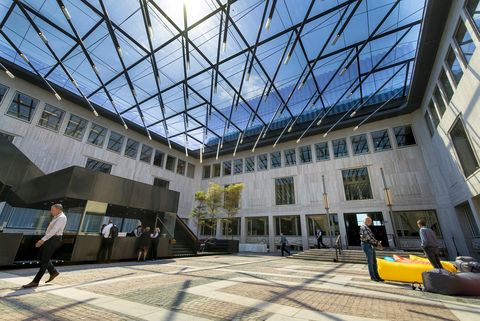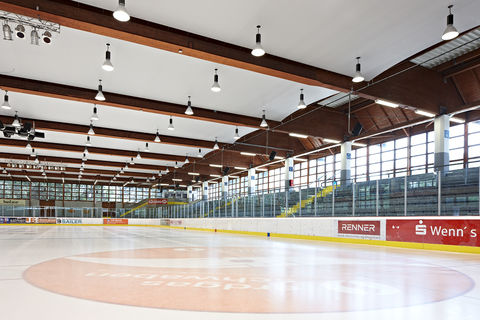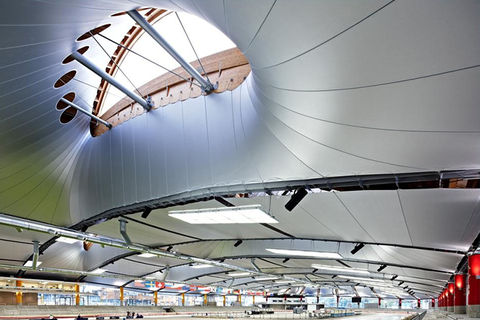Low-E - an excellent property
Low-E is often the magic word used to explain solar irradiation for membrane roofs. Of course, it is not entirely that simple but it is a good starting point for textile architecture. This property can be attributed to many membrane materials and it is especially powerful when the coating or film itself receives the appropriate additives. Materials with distinct low-E properties include PTFE glass, silicone glass, PVC/PES and ETFE membranes. These materials typically have a surface coating containing metal particles to reflect as much energy as possible while simultaneously causing minimal heating of the original substrate. Unfortunately metals corrode so it is necessary to apply them to coatings or deposit them directly into the foil substrate resulting in the so-called low-E effect. For example, this is very suitable for covering ice rinks in order to "separate" the cold air above the icy surfaces from those in the roof construction. Temme // Obermeier successfully realized this technology in projects at Inzell and Landsberg am Lech.
What makes Low-E ?
Low emissivity (low-E) coatings ensure that as much of the thermal radiation as possible is reflected thus limiting the heating of the coated fabric. Generally, the less the membrane material heats up, the less heat can dissipate inside. The more effective this low-E coating is, the greater the temperature difference between inside and outside could be, the less you feel the heat on the material itself. The actual influence on the longevity of the different materials is not yet fully known but it does impact the translucency. In the case of ETFE, the translucency is reduced, the ETFE foil appears a greyish-blueish colour similar to looking through sunglasses or sun protection glazing, etc.
CHARACTERISTICS OF LOW-E
- temperature resistant as described in the properties of the membranes
- not more flammable than without low-E particles - according to DIN4102 + EN13501
- high solar reflection by metal particles
- translucence slightly restricted, many colors
- non-toxic since no problematic metals are used (usually TiO2)
- surface characteristics do not change



